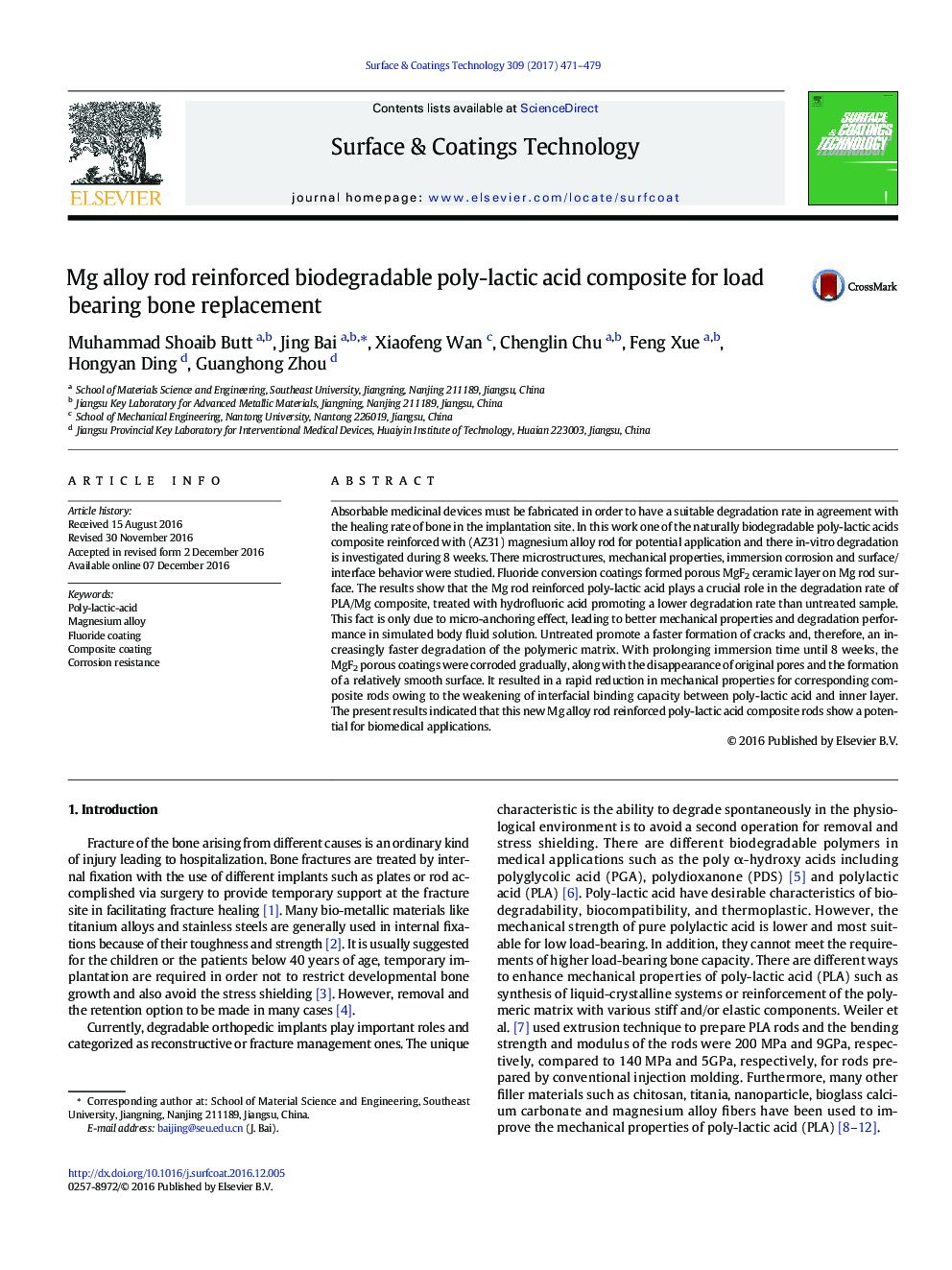| Article ID | Journal | Published Year | Pages | File Type |
|---|---|---|---|---|
| 5465284 | Surface and Coatings Technology | 2017 | 9 Pages |
Abstract
Absorbable medicinal devices must be fabricated in order to have a suitable degradation rate in agreement with the healing rate of bone in the implantation site. In this work one of the naturally biodegradable poly-lactic acids composite reinforced with (AZ31) magnesium alloy rod for potential application and there in-vitro degradation is investigated during 8Â weeks. There microstructures, mechanical properties, immersion corrosion and surface/interface behavior were studied. Fluoride conversion coatings formed porous MgF2 ceramic layer on Mg rod surface. The results show that the Mg rod reinforced poly-lactic acid plays a crucial role in the degradation rate of PLA/Mg composite, treated with hydrofluoric acid promoting a lower degradation rate than untreated sample. This fact is only due to micro-anchoring effect, leading to better mechanical properties and degradation performance in simulated body fluid solution. Untreated promote a faster formation of cracks and, therefore, an increasingly faster degradation of the polymeric matrix. With prolonging immersion time until 8Â weeks, the MgF2 porous coatings were corroded gradually, along with the disappearance of original pores and the formation of a relatively smooth surface. It resulted in a rapid reduction in mechanical properties for corresponding composite rods owing to the weakening of interfacial binding capacity between poly-lactic acid and inner layer. The present results indicated that this new Mg alloy rod reinforced poly-lactic acid composite rods show a potential for biomedical applications.
Related Topics
Physical Sciences and Engineering
Materials Science
Nanotechnology
Authors
Muhammad Shoaib Butt, Jing Bai, Xiaofeng Wan, Chenglin Chu, Feng Xue, Hongyan Ding, Guanghong Zhou,
